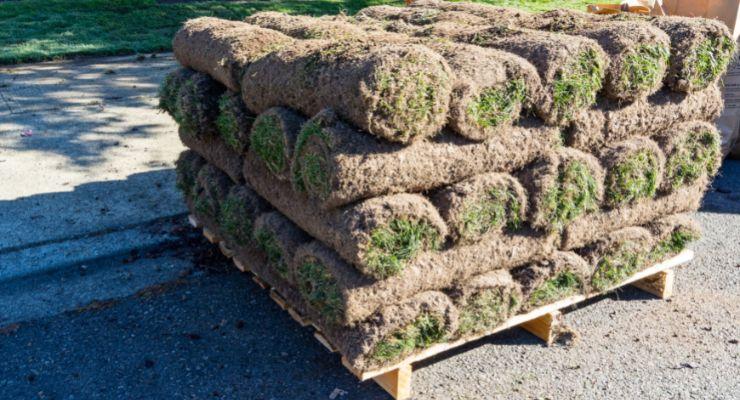When it comes to purchasing sod for a lawn or landscaping project, accurate measurements are crucial to ensure you get the right amount for your needs. The standard unit of measurement for sod is the pallet, and it’s important to understand how many square feet are on a pallet to avoid over or under-ordering.
This article provides a comprehensive overview of the key information you need to know about purchasing sod by the pallet, including standard measurements, conversion formulas, and the factors that can affect the number of square feet on a pallet, such as the type of sod and regional differences.
Additionally, the article provides tips for ordering your sod to ensure you get the right amount for your needs, making it a valuable resource for anyone looking to purchase sod for their next project.
How Many Square Feet are on a Pallet of Sod?
Determining the square footage of sod on a pallet is crucial for ensuring accurate measurements and for determining the cost of your purchase.
The standard method for measuring square footage is by using a tape measure to calculate the length and width of the sod and then multiplying those numbers together.
For example, if your sod is 10 feet long and 5 feet wide, the square footage would be 50 square feet.
Importance of accurate measurements
It is important to accurately measure the square footage of your sod because the cost of your purchase is determined by the square footage of the sod.
If your measurements are off, you may end up paying more or less than you anticipated. Additionally, accurate measurements are important for ensuring that you have enough sod to cover the desired area.
In addition to measuring length and width, it is also important to consider the thickness of your sod, as this will affect the total square footage.
Some sod types may be thicker or thinner than others, so it is essential to factor this into your measurements.
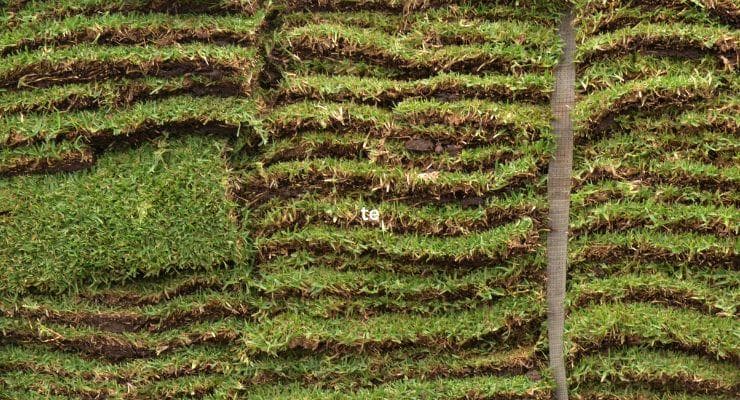
Factors Affecting Square Footage on a Sod Pallet
The number of square feet in a pallet of sod can vary based on several factors. One of the most significant factors is the thickness of the sod.
Different types of sod may have different thicknesses, which will impact the square footage. It’s essential to measure the thickness of the sod before purchasing to ensure you have enough to cover your desired area.
Another factor that affects the square footage of sod on a pallet is the grass type. Different types of sod can have varying square footage per pallet due to the way they are harvested and packaged.
For example, some sod may be harvested in large rolls, while others may come in smaller, hand-rolled sections. Understanding the different types of sod and their square footage per pallet is crucial to making an informed decision when ordering sod.
Regional differences
Finally, regional differences can also play a role in the square footage of sod on a pallet. Sod pallets in different regions may vary in size and thickness due to local conditions and the types of sod grown in those regions.
As a result, it’s essential to consult with local professionals or suppliers to get accurate information about the square footage of sod pallets in your area.
Names for Different Sod Shapes
When purchasing sod, it is important to know the different shapes that sod can come in. Three common shapes include Slab, Mini Hand Roll, and Large Roll.
Slab
Slab sod is the standard shape for sod, and it is the most common type of sod available. It is cut into sections that are typically 2 feet wide and 4 to 8 feet long. This shape is easy to install and is suitable for a wide range of applications.
Mini Hand Roll
Mini Hand Roll sod is a smaller version of slab sod that is rolled up for easier handling. This type of sod is ideal for smaller lawns or for patching existing lawns. Mini Rolls sod typically comes in sections that are 2 feet wide and 1 to 2 feet long.
Large Roll
Large Roll sod is similar to slab sod, but it is much larger and can be difficult to handle. This type of sod is ideal for large commercial or industrial lawns, as covers a significant amount of ground quickly. Large Roll sod typically comes in sections that are 4 to 6 feet wide and 10 to 25 feet long.
It is important to note that the square footage per pallet will vary depending on the type of sod selected. When ordering sod, it is important to consider the square footage needed and choose the right type of sod to meet those needs.
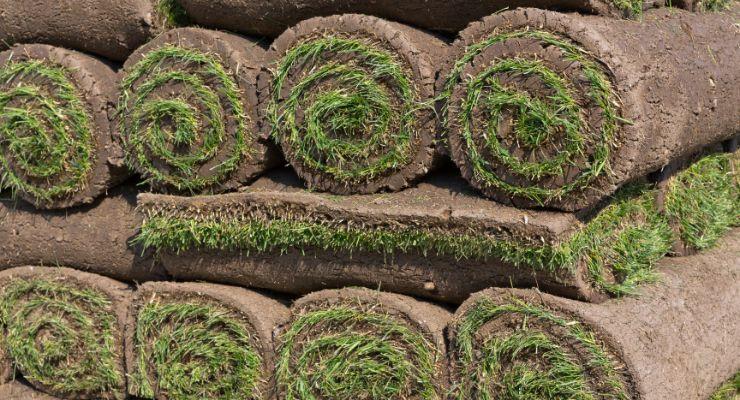
Pallet Square Footage by Sod Type
To help you decide which type of sod is right for your project, we have compiled a list of the average square footage per pallet based on the type of sod.
Slab Sod
Mini Hand Roll Sod
Large Roll Sod
400 – 530 square feet per pallet
400 – 500 square feet per pallet
500 – 780 square feet per pallet
When ordering sod, it is essential to consider the size and shape of the sod, as well as the number of square feet needed for your project.
Tips for Ordering Your Sod
Knowing the price per square foot of sod is essential when placing an order. This figure can range depending on multiple elements like the type of turf grass, amount of pallets purchased, and regional market rates.
When trying to figure out what coverage one pallet of sod will provide, it is necessary to take into account the kind and thickness of grass being bought.
As different varieties can have varying amounts of square footage per palette due to their size and shape, regional differences must also be considered when calculating how much area each pallet would cover as local conditions can play a role in the number of square feet on a particular pallet.
When selecting the right type of grass for your lawn, it is essential to compare the coverage per pallet and other factors such as maintenance requirements and cost.
While square footage may play a major role in deciding which sod to buy, taking into consideration all aspects will ensure you make an informed purchase decision.
To have a luscious and verdant lawn, maintenance is key. Viridescent grass requires various levels of attention depending on the type you chose for your project; including watering, mowing, and fertilizing.
Therefore it’s important to contemplate these factors when selecting sod as proper care is fundamental for lasting success in cultivating an impeccable landscape.
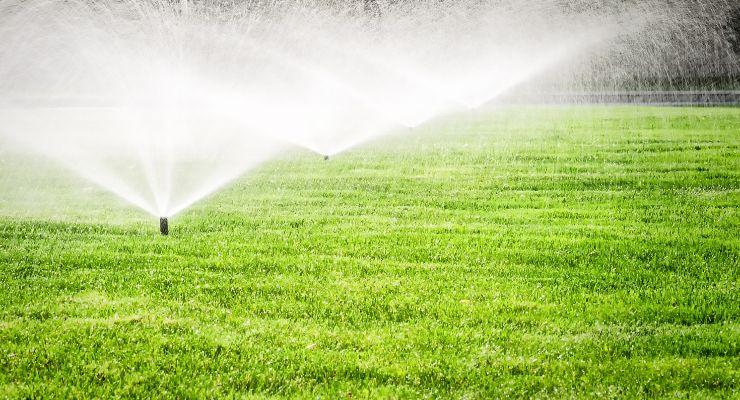
Frequently Asked Questions
What is a pallet of sod and how is it measured?
A pallet of sod refers to a unit of grass that is grown, cut, and packaged for sale as a complete unit, often in a rectangle or square shape. The size of the sod placed on a pallet can vary depending on the type of sod, but it is typically measured in square feet.
Can you order sod in a specific size or shape?
Yes, you can order sod in a specific shape. Some common sod shapes include slabs, mini hand rolls, and large rolls. St. Augustine, Fescue, and Bermuda grass sods are typically cheaper than cool season grasses.
How much does a pallet of sod typically weigh?
The weight of a pallet of sod can vary, but it typically weighs between 2,000 and 4,000 pounds.
What is the average cost per square foot for a pallet of sod?
The average cost per square foot for a pallet of sod can vary depending on the location and type of grass but typically ranges from $0.50 to $2.00 per square foot.
What is the ideal time of year to order a pallet of sod?
The ideal time of year to order a pallet of sod depends on the location, but it is typically best to order sod in the spring or fall, when the weather is cool and the soil is moist, making it easier to install.
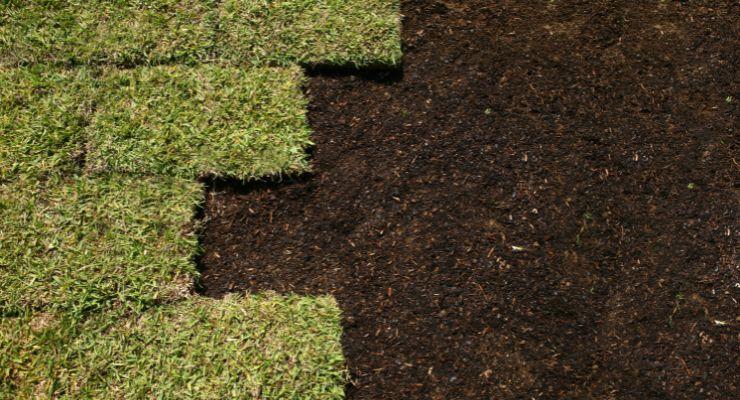
Conclusion
When ordering sod, it is important to consider multiple factors such as the type of grass and local conditions to get an accurate estimate of how many square feet are on a pallet.
The square footage will vary depending on these factors and should be taken into account when calculating the amount of area each pallet would cover.
Additionally, proper care and maintenance are essential for maintaining a beautiful lawn over time. With these tips in mind, you can make an informed purchase decision that best fits your needs.
